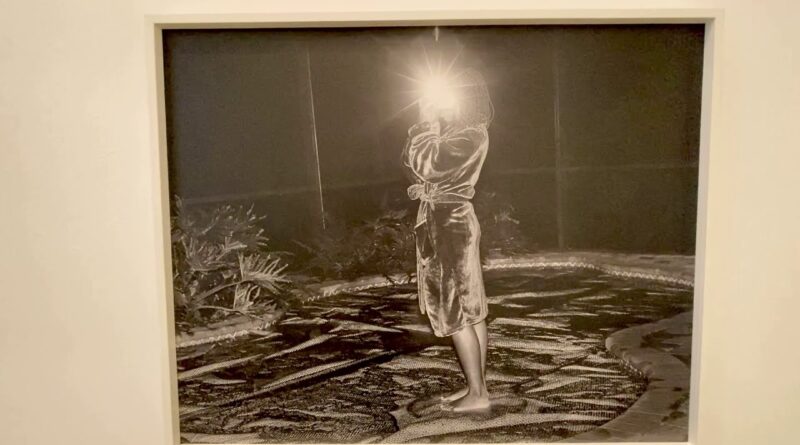Women of the African Diaspora: Identity, Place, Migration, Immigration gallery tour
curated by Aaron Turner and featuring photography by Widline Cadet, Jasmine Clarke, and Nadiya I. Nacorda
December 3, 2020–January 30, 2021
Using photography, three artists reflect upon their experiences navigating contemporary life in the United States and beyond as women of the African Diaspora, while also contributing to the larger conversation surrounding inclusion and exclusion within the visual narrative of art history.
Curator’s Statement by Aaron Turner:
“I firmly believe that photography can bring us closer to that which we desire to understand the most. And often, who we are has everything to do with where and who birthed us into this world. From there, we find the meaning of home, but sometimes home is not just one place. Sometimes the idea of a home can function as multiple sets of dualities. Our parental roots begin from one place, yet we grow up in another, or are born in one place, then settling in another during our adolescent years. We can also spend extended periods in areas, and it begins to feel like home, though we are distanced from past relationships with family and friends from that place of origin. Whichever location we may find ourselves, photography remains this marker of time.
In my family album archive, there are those missing pictures. The ones you can’t attach to oral storytelling. The photos you wish existed that would bring you a little closer to understanding who you are and where/who you come from.
We all make decisions in life to pursue a specific goal or understanding, and this is also the case when one chooses the camera, or rather the camera chooses them. When one points the camera at their own family, this is a very particular choice, one that you may not quickly walk away from. Am I signing up for a lifelong pursuit? Am I responsible for recording my family’s legacy through photography? Will I ever be able to turn the camera in another direction? A direction that genuinely fulfills the pursuit of understanding one’s self and being?
In the organizing of this exhibition, my goal was to help create a transformative experience. Through photography, I believe each artist has touched on the transformative process: changes in the self’s understanding, revision of belief systems, and lifestyle changes on their terms.
Jasmine Clarke has a story about her father’s recurring dream that I keep reflecting on:
“One night in Jamaica, as my father and I drove through the mountains, he described a recurring dream: he is in his hometown, Saint Mary’s, at a certain winding road that’s shaped like an N, trying to catch the bus. He misses it and has to run up the mountain through the bush and slide down the other side to catch it. This is his only dream set in Jamaica. He told me as we approached the N. I listened while chewing on my sugar cane. It’s strange hearing about a dreamscape while physically going through it—like déjà vu”
Clarke’s photographs lean into enigmatic possibilities, a cross between dreams and reality. One particular picture in mind is Olivia, Looking. The positioning and understanding of place are crucial in the photograph. This photograph depicts Clarke’s sister looking out into a void, entering or exiting a dreamscape, at a high facing outward towards the ocean. A yellow shirt contrasts against the muted sea and barely legible sky, we as the viewer are sucked into the dreamscape and Olivia, who occupies the foreground. I want that same vantage point, and I imagine myself occupying that space. At this moment, Clarke captures Olivia’s understanding of self yet, at the same time, allowing the viewer to co-occupy the space all at once.
Nadiya Nacorda’s photographs exude self-awareness through the gaze on oneself, loved ones, and objects of significance. In particular, the photograph Self-portrait #1: Wearing a Doek in Lolo and Lola’s Bathroom, from the series All the Orchids are Fine. When I first saw this image by Nacorda, I instantly was reminded of LaToya Ruby Frazier’s, Self-Portrait (October 7th 9:30 am), 2008. It’s the direct engagement with the camera, the gaze that draws you in. Seduces you into specifically thinking about both of the artist’s self-awareness and their narratives. The act of setting up the camera and looking back onto one’s one body, gaze, and position. There are many implications to draw from. Underlying is the ability to relate to others going through a similar state of being or state of self-awareness, using photography as an empathetic method of communication with others, sharing with the intention of new dialogue.
Lastly, I want to reflect on the practice of Widline Cadet, the final artist present in the exhibition. In Cadet’s images, I find a pursuit of intimacy, especially in her portraits, and a seeking of what home is or can be…”
!ran out of space! Read the entire statement, learn about the artists & curator, and see all of the images here: blueskygallery.org/exhibitions/archives/2020/women-of-the-african-diaspora
source

